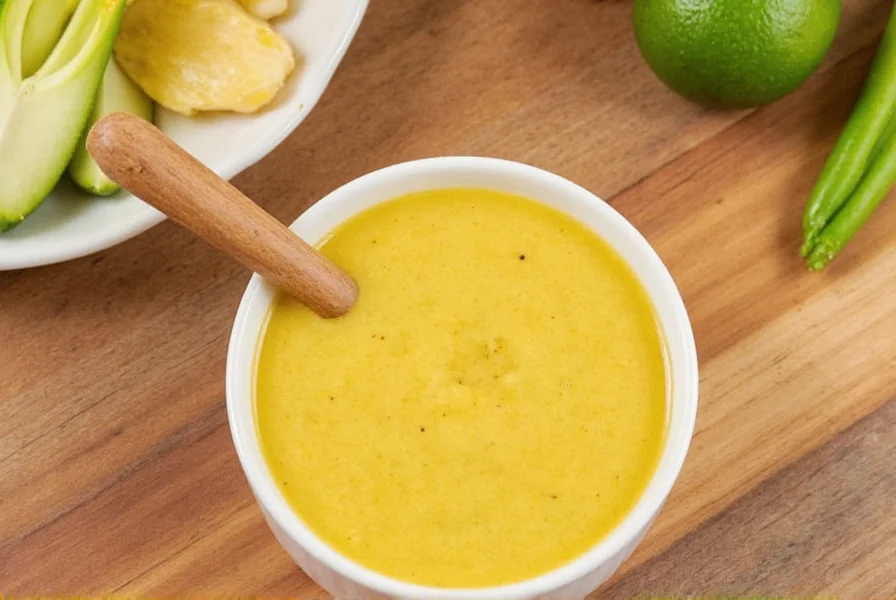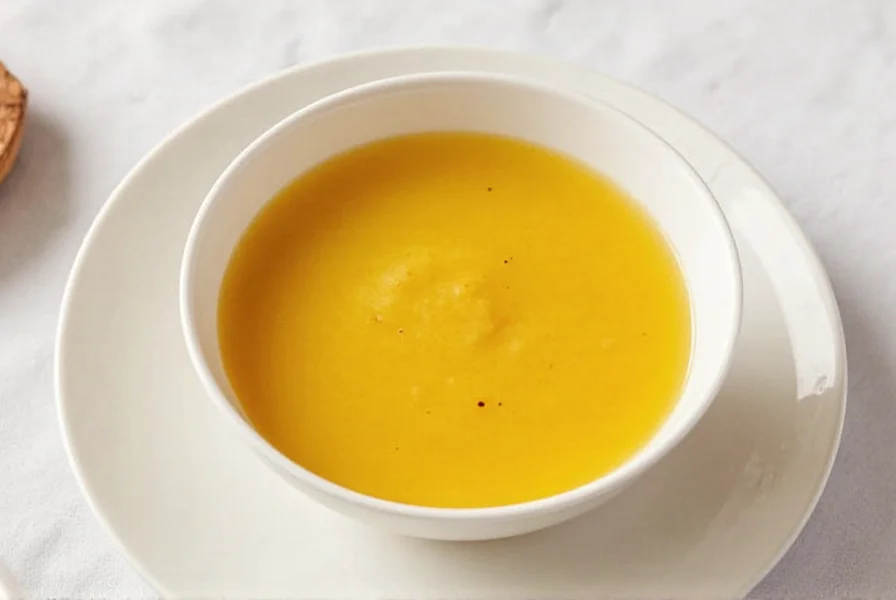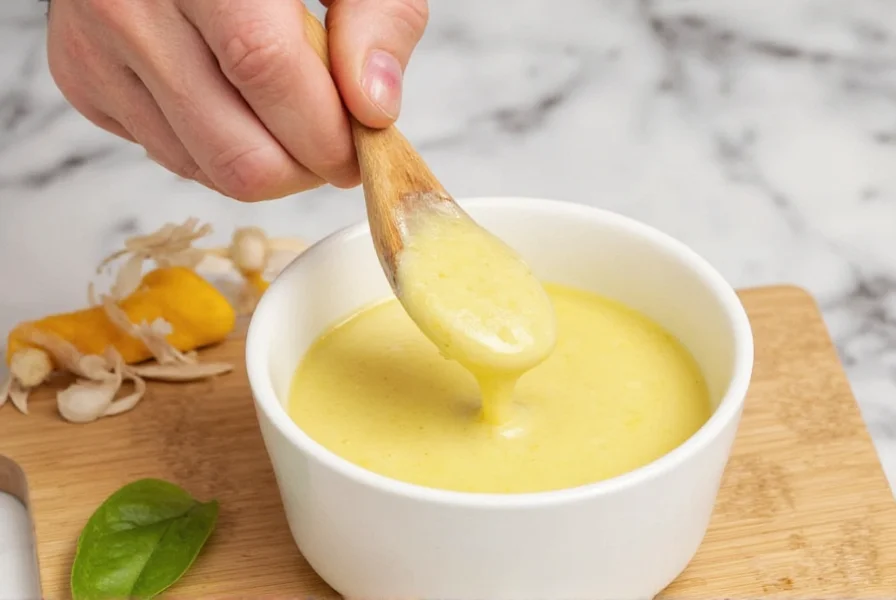Ginger sauce has become a staple in kitchens worldwide thanks to its remarkable ability to transform simple dishes into culinary delights. Unlike many store-bought alternatives that rely on artificial flavors, authentic ginger sauce derives its vibrant character from freshly grated ginger root—the key ingredient that provides both heat and aromatic complexity.
Understanding Ginger Sauce Composition
The magic of ginger sauce lies in its ingredient synergy. While recipes vary across culinary traditions, most versions share these fundamental components:
| Core Ingredient | Function | Proportion Guide |
|---|---|---|
| Fresh ginger root | Provides signature heat and aroma | 3-4 tablespoons grated per cup of sauce |
| Soy sauce | Delivers umami and saltiness | 1/4 cup per recipe |
| Rice vinegar | Adds brightness and balances flavors | 2 tablespoons per recipe |
| Sweetener (honey/maple syrup) | Counteracts ginger's sharpness | 1-2 tablespoons per recipe |
| Garlic | Enhances depth and complexity | 1-2 cloves per recipe |
The texture of ginger sauce ranges from smooth to slightly chunky depending on preparation method. Traditional Chinese ginger sauce often features visible ginger fibers, while Japanese interpretations might incorporate grated daikon for additional complexity. When making homemade ginger sauce recipe variations, the ginger-to-liquid ratio determines whether your sauce works better as a marinade or dipping sauce.

Regional Variations and Culinary Applications
Ginger sauce manifests differently across culinary traditions, each variation serving specific purposes:
- Chinese ginger scallion sauce—features generous amounts of both ginger and scallions, traditionally served with poached chicken or seafood
- Japanese gari-inspired sauce—lighter, sweeter version often accompanying sushi or delicate fish dishes
- Korean ginger garlic sauce—incorporates gochujang for heat, perfect for bulgogi marinades
- Western fusion interpretations—frequently include citrus elements like orange or lime for added brightness
When considering what to serve with ginger sauce, think beyond Asian cuisine. This versatile condiment elevates roasted vegetables, grilled meats, and even works beautifully as a salad dressing base when properly diluted. For stir-fry applications, adding ginger sauce during the final minute of cooking preserves its vibrant flavor profile.
Creating Perfect Homemade Ginger Sauce
Follow this straightforward method for reliable results every time:
- Peel and finely grate 1/4 cup fresh ginger root using a microplane
- Mince 2 garlic cloves to a paste-like consistency
- Combine with 1/4 cup soy sauce, 2 tbsp rice vinegar, and 1 tbsp honey
- Add 1 tsp sesame oil and a pinch of white pepper
- Whisk vigorously until emulsified
- Let rest for 30 minutes to allow flavors to meld
This basic ginger garlic sauce ingredients formula serves as an excellent foundation for experimentation. For a ginger sauce for stir fry, increase the soy sauce proportion slightly. When making ginger sauce for seafood, consider adding a touch of rice wine for additional complexity. The ideal ginger dipping sauce maintains a pourable consistency—not too thick, not too watery.

Storage and Substitution Guidance
Proper storage extends your sauce's shelf life while maintaining flavor integrity. Transfer cooled sauce to an airtight glass container and refrigerate. Quality homemade ginger sauce recipe versions typically remain fresh for 2-3 weeks. For longer preservation, freeze in ice cube trays then transfer to freezer bags—ideal for portioning when making ginger sauce from scratch for future meals.
When ingredients are unavailable, consider these substitution options:
- Fresh ginger unavailable? Use 1/2 tsp ground ginger plus 1 tsp lemon juice per tablespoon of fresh ginger called for
- Need gluten-free? Substitute tamari for soy sauce in your ginger sauce ingredients list
- Reducing sugar? Replace honey with sugar-free maple syrup alternative
- Too spicy? Balance heat with additional sweetener or a splash of coconut milk
Understanding ginger sauce storage tips prevents waste while maintaining quality. Always use clean utensils when accessing stored sauce to prevent contamination. The best ginger sauce for seafood applications should be made fresh whenever possible, as seafood's delicate flavor benefits from maximum ginger vibrancy.
Avoiding Common Preparation Mistakes
Even experienced cooks encounter pitfalls when preparing ginger sauce. Watch for these frequent errors:
- Using pre-minced ginger—bottled ginger lacks the bright, complex flavor of freshly grated root
- Overcooking the sauce—prolonged heat diminishes ginger's aromatic compounds
- Imbalanced sweetness—too much sugar masks ginger's distinctive character
- Insufficient resting time—flavors need 30+ minutes to properly meld
- Incorrect ginger preparation—using a food processor creates bitter compounds not present when hand-grated
For optimal results in your ginger sauce for stir fry applications, add the sauce during the final minute of cooking. This preserves the ginger's volatile oils that provide its characteristic aroma. When using ginger sauce as a marinade, limit contact time with proteins to 2 hours maximum—longer exposure can begin to 'cook' the surface through enzymatic action.











 浙公网安备
33010002000092号
浙公网安备
33010002000092号 浙B2-20120091-4
浙B2-20120091-4